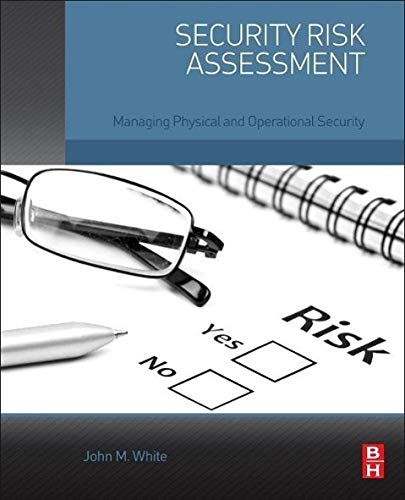Security Risk Assessment: Managing Physical and Operational Security is a comprehensive guide to evaluating and mitigating potential threats to an organization’s physical and operational security. This resource provides valuable insights and strategies for identifying vulnerabilities, assessing risks, and implementing effective security measures.
The first step in managing physical and operational security is conducting a thorough risk assessment. This involves identifying potential threats, such as theft, vandalism, or unauthorized access, and evaluating the likelihood and potential impact of each threat. By understanding the specific risks facing an organization, security measures can be tailored and prioritized accordingly.
Once risks are identified, appropriate security measures can be implemented. This may include physical security measures such as access control systems, surveillance cameras, and alarms, as well as operational security measures such as employee training and security protocols. Regular testing and monitoring are essential to ensure the ongoing effectiveness of these measures.
By effectively managing physical and operational security, organizations can minimize the risk of security breaches and protect their assets, employees, and sensitive information. This resource serves as a valuable tool for organizations seeking to enhance their security posture and safeguard against potential threats.
Understanding Security Risk Assessment
Security risk assessment is a crucial undertaking for organizations that aims to identify and manage potential threats to the physical and operational security of their assets. By conducting a comprehensive assessment, businesses can proactively mitigate risks and develop effective security strategies.
Physical Security Risk Assessment
Physical security refers to measures taken to protect an organization’s tangible assets, such as buildings, equipment, and personnel. Conducting a physical security risk assessment involves evaluating vulnerabilities, identifying potential threats, and determining the likelihood and impact of these threats. This assessment helps organizations understand their weaknesses and implement appropriate safeguards.
During a physical security risk assessment, professionals examine various aspects such as access control systems, surveillance systems, perimeter security, and emergency response protocols. By identifying potential weaknesses in these areas, organizations can implement measures to enhance security, such as installing CCTV cameras, employing security personnel, or improving access control systems.
Operational Security Risk Assessment
Operational security focuses on protecting an organization’s day-to-day operations, data, and information systems. Conducting an operational security risk assessment involves analyzing potential vulnerabilities in the organization’s processes, technology systems, and employee practices.
During an operational security risk assessment, professionals evaluate the effectiveness of security policies, employee training programs, data management practices, and disaster recovery plans. By identifying weaknesses in these areas, organizations can implement measures to strengthen operational security, such as implementing multi-factor authentication, conducting regular security awareness training, and regularly backing up critical data.
In conclusion, security risk assessment plays a critical role in managing both physical and operational security risks. By conducting thorough assessments, organizations can identify vulnerabilities, assess potential threats, and implement appropriate measures to safeguard their assets and operations.
Security Risk Assessment: Managing Physical and Operational Security

Publisher: Butterworth-Heinemann; 1st edition (August 6, 2014)
Language: English
Paperback: 230 pages
ISBN-10: 0128002212
ISBN-13: 978-0128002216
Item Weight: 13.8 ounces
Dimensions: 7.5 x 0.52 x 9.25 inches


